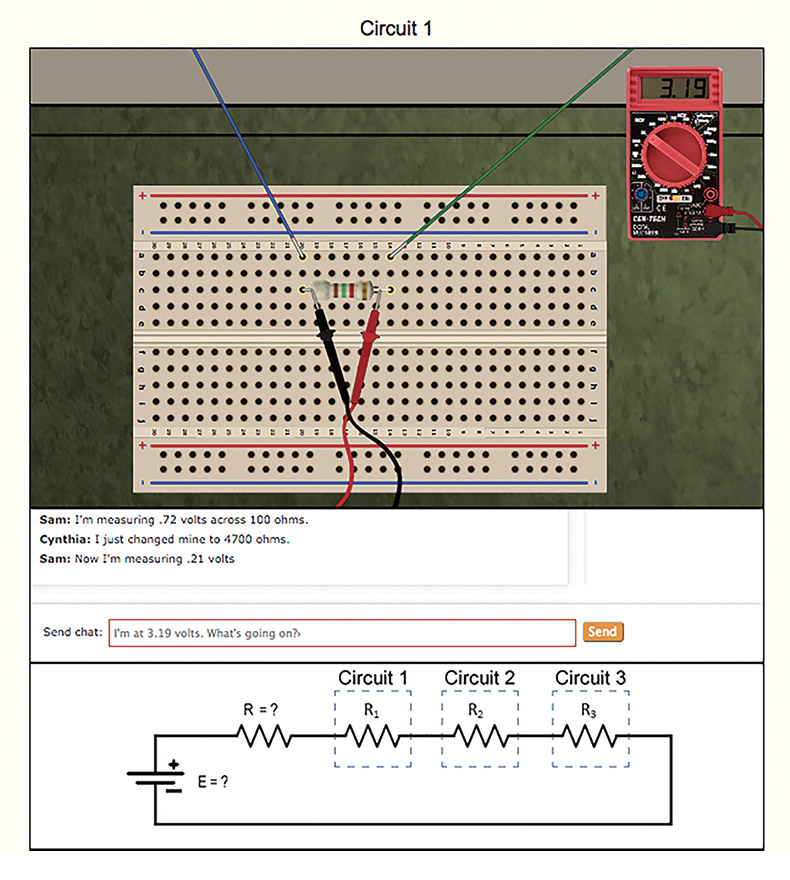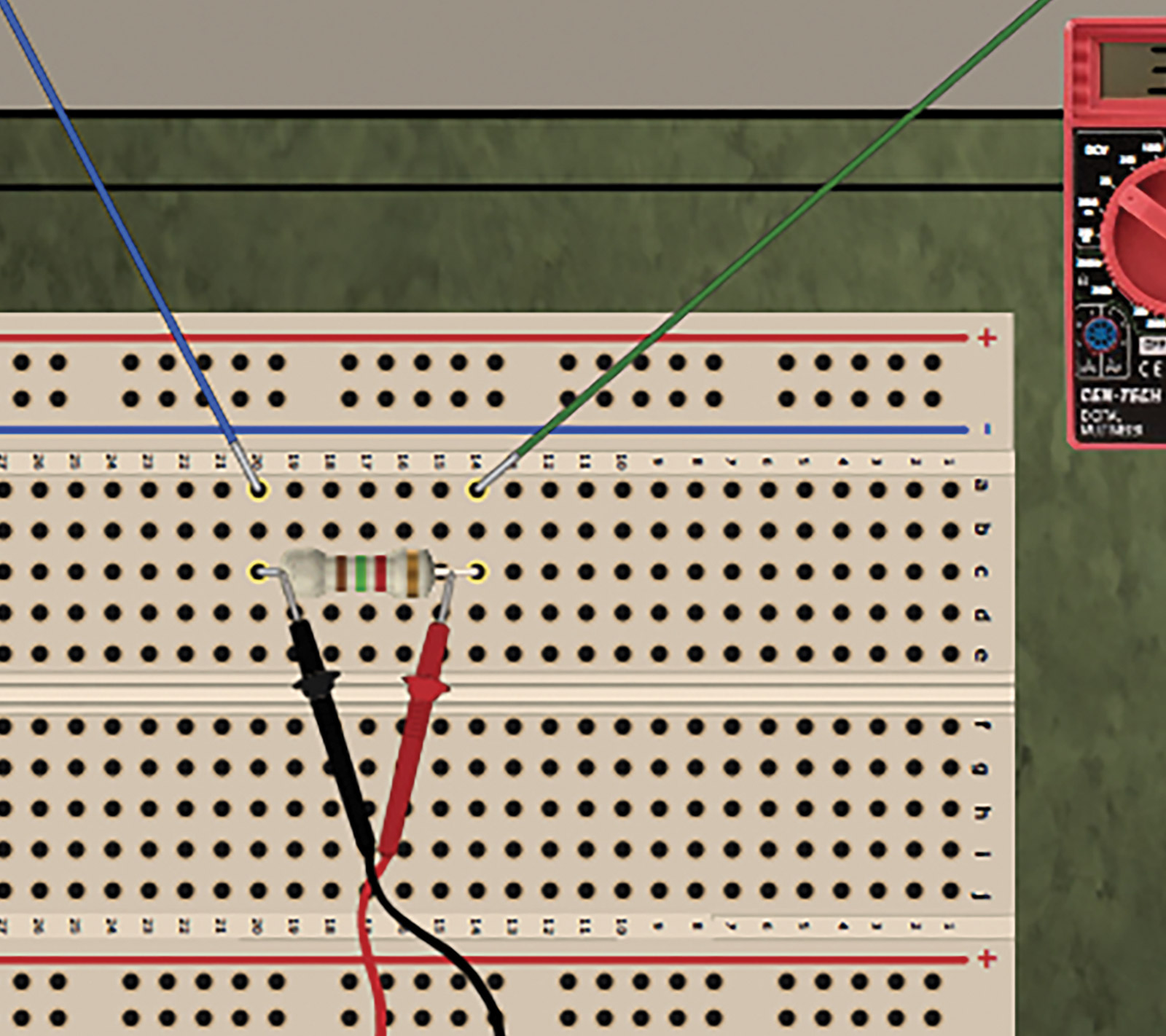Teaching Teamwork in Electronics
For baseball fans the double play is one of the most exciting aspects of the sport. Never mind the home run—the batter pointing toward the centerfield flag, the crack of the bat followed by the arrogant strut to first base—the true aficionado thrills to the exquisite timing and flawless execution required for shortstop and second baseman to deliver the ball to first base milliseconds before the runner arrives. Requiring highly honed individual skills as well as the seemingly effortless coordination that comes only with endless hours of practice, the double play is the epitome of teamwork in a sport that glorifies the term.
Teamwork is increasingly valued in the workplace, too, as telecommunication technology continues to shrink the planet, and the flow of information displaces the exchange of things in the global marketplace. Nowhere is this more true than in the international world of science where advances are rarely made by the proverbial lone genius working in the shadows. And what is true for the laboratory is equally valid for the workplace as a whole. Prospective employers interviewed in 2006, the most recent data available, overwhelmingly rated the ability to collaborate as “very important” for college graduates seeking entry-level jobs.*
But there is a critical mismatch between the value of teamwork in the modern world and its status in an educational setting. The problem arises from the difficulty of teaching students to work together while retaining the ability to evaluate them individually. A high score on a test may reflect the superior performance of a particular student, while the effort of an otherwise exemplary team may be sabotaged by the carelessness of a single member. The difficulty of assessing the performance of each member of a team results in the paradox that the very collaboration that is so prized in the workforce is considered “cheating” when practiced in school.
In response to this dilemma we have embarked on a new project called Teaching Teamwork with Tidewater Community College, CORD and ETS. Funded by the Advanced Technological Education program at the National Science Foundation, the project is aimed at students in electronics classes in technical high schools and two- and four-year colleges. Our goal is to teach students how to work effectively in teams, either face-to-face or remotely over the Internet. Using technology adapted from our SPARKS (Simulations for Performance Assessments that Report on Knowledge and Skills) project, we provide each student with a simulated electronic breadboard and a set of AC and DC components and test equipment. Eventually, the parts list will include digital components and microcontrollers.
Students can link their boards together and use them to build, modify and test realistic simulations of electronic circuits. They work independently on their own piece of the circuit, but they can communicate with their teammates. Local changes made by each student, as they affect the circuit as a whole, may alter measurements made by other students. The computer logs each student’s actions as the team works together to design, test and troubleshoot its shared circuit.
We will analyze this data, compare it to classroom observations, questionnaires and other measures, and use it to shed light on the students’ collaborative problem-solving skills. We hope to automate this data analysis and use it to generate reports that reliably evaluate the performance of each student as well as that of the team as a whole.
Collaborative tasks

To evaluate a team’s performance, group challenges must require collaboration, engage each team member approximately equally, and align to course content and learning goals. In our first collaborative problem-solving task, we present each member of a team of three students with a portion of a simple circuit that consists of a DC voltage source with unknown voltage and internal resistance feeding three variable resistors in series (Figure 1). The students are provided with a schematic of the circuit, but they see only a piece of it on their breadboard. None of them can see the external voltage source, nor measure its voltage and resistance. Instead, each student sees one of the variable resistors and is provided with a voltmeter. The students can change the resistance of their resistor and they can measure the voltage drop across it. Each student is given the challenge of producing a particular value for that voltage drop.
The problem is inherently collaborative because changes made by any of the team members change the voltages measured by the other two, making a “hunt and peck” strategy highly inefficient. If students choose to work on their own, trying to make their voltmeter read the right value by changing their resistor, they quickly find that the actions of the other students frustrate their task. The only strategies that work require the team to coordinate to determine the external voltage and resistance, after which they can work out together the values of their respective resistances that will produce the desired voltage drops.
Preliminary data
We piloted the activity with four three-member teams of students enrolled in a DC circuits course at Tidewater Community College in Virginia Beach, Virginia. All the students were male and ranged in age from early twenties to mid-forties. We explained the problem to them, drew the schematic of the circuit on the blackboard and answered questions. We videotaped the groups and collected log data.
The teams were given approximately one hour to accomplish the task. None succeeded. Instead, each team resorted to the ineffective optimization strategy described above. Each student tried to achieve his individual goal, independent of the others. None of the teams attempted to determine the characteristics of the external voltage source.
Though disappointing overall (given the prior knowledge of the class, the problem should have been easily solvable), this early trial is also quite provocative and begs the question, did the difficulty stem from the students’ lack of content knowledge or did it result from their having to work as a team? To find out, we will offer the same problem in two different conditions. Some students will work in teams. Others will work alone. They will be given the same instructions as the teams and provided with a breadboard with three resistances in series, with the same unseen external DC source. Thus, the only difference between the two conditions will be the absence of teamwork in the second. That may make the problem even harder—after all, the solo students will have no one with whom to discuss the problem. Or eliminating the need to collaborate may improve performance on the solo task.
Will the students be able to pull off a double play or will their performance depend on occasional home runs? We can’t wait to find out.
*Casner-Lotto, J., & Barrington, L. (2006). Are they really ready to work? Employers’ perspectives on the basic knowledge and applied skills of new entrants to the 21st century U.S. workforce. The Conference Board, Corporate Voices for Working Families, the Partnership for 21st Century Skills, and the Society for Human Resource Management.
Paul Horwitz (phorwitz@concord.org) directs the Teaching Teamwork project.
This material is based upon work supported by the National Science Foundation under grant DUE-1400545. Any opinions, findings, and conclusions or recommendations expressed in this material are those of the author(s) and do not necessarily reflect the views of the National Science Foundation.

